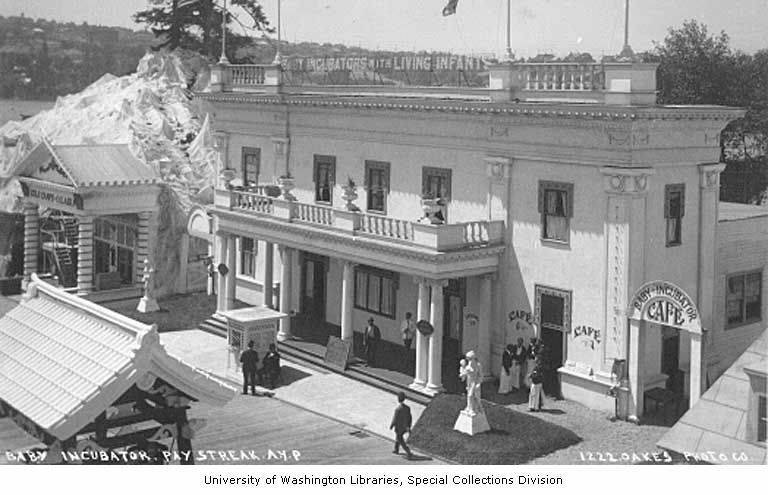On the Pay Streak: The Baby Incubator Exhibit and the Eskimo Village

The facade of the Baby Incubator exhibit on the Pay Streak at the AYP Expo. As one can see, the "Baby Incubator Café" is attached to the exhibit building.

The facade of the "Eskimo" exhibit at the AYP Expo. Popular "Queen of the Paystreak" Nancy Columbia, a member of the Labrador Inuits, stands behind the dog seated on the ground. Columbia had traveled with her mother and the Eskimo exhibit since her birth at the Chicago World's Fair in 1893.
The Pay Streak was the AYP Expo's midway area, featuring a huge assortment of attractions, most of which featured the display of human beings in their "natural" habitats. The two we will be focusing on are the "Baby Incubators" exhibit and the "Eskimo Village."
THE BABY INCUBATOR EXHIBITION was an expected feature on the exposition midways, as such exhibit had become a world's fair staple since their introduction the 1896 Berlin Exposition. Dr. Martin Couney, the founder of the “Infant Electrobator” at Coney Island’s Luna Park and the foremost promoter of the baby incubator sideshows at expositions, was not affiliated with the one at the AYP Expo, although much of the exhibit’s inspiration can be accredited to him. The manager of the AYP Expo's Baby Incubator exhibit was M. E. Fischer. Baby incubator exhibits provided a social service to parents of premature infants, education to the public on the proper care for these infants when treated at home, and a promotion for hospitals and medical staff to purchase the equipment.
THE ESKIMO VILLAGE was a re-creation of a native "Eskimo" village with inhabitants from Labrador, Siberia and Alaska. This real-life exhibit included native dances, canoe racing, igloos made of caribou hide, native artists at work, and sled dog rides.